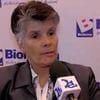Explore all the information on
Minerals in poultry nutrition
Minerals in poultry nutrition are typically classified as macro- or micro-minerals, depending on the levels needed in the diet. The macro-minerals include calcium, phosphorus, chlorine, magnesium, potassium, and sodium. Requirements for the macro-minerals are typically expressed as a percentage of the diet, while the requirements for the micro-minerals are stated as parts per million. Although the quantities required for micro-minerals are lower than for macro-minerals, they play an essential role in the body's metabolism. The micro-minerals include copper, iodine, iron, manganese, selenium, and zinc.
We have a layer poultry farm here in the philippines. 2 bldg. with a population of 9,400/bldg. The breed is lohman white. Age is between 20 - 28 weeks old with a production of 70% and 90%. The problem is our mortality is ranging from 10 - 15 heads per building per day. primary cause of death is prolapse and egg bound. we fed them with a high enery feeds, does the high energy feeds contributes to our chicken prolapse? Temperature is around 28 to 30degree celcius....
Comments : 30
Recommendations: 0
INTRODUCTION Vitamin D is a group of closely related compounds that have antirachitic activity. It has been estimated that nearly 50% of the United States population is at risk for vitamin D deficiency or insufficiency (Holick et al., 2011). Vitamin D 3 (D 3 ) deficiency can cause rickets in young children or increase the risk of osteoporosis and osteomalacia in adults (Holick, 2005). One approach to increase D 3 intake in a population without...
Comments : 0
Recommendations: 1


New Generation of Water-Soluble Probiotics to Alleviate Gut Health Challenge During Feed Transition Period in Broiler Production
Suggested link
Choline- chemically known as 2-hydroxyethyl-trimethyl ammonium hydroxide andis referred as vitamin B4. It has recently been claimed as a rediscovered vitamin & performance promoter in poultry. The role of choline in the prevention of conditions suchas perosis and liver enlargement in chicks is already well known. Choline wasfirst isolated from ox bile ("chole" in Greek) in 1849. Its nutritional importancehas been recognized since 1930 and it is now a common dietary supplement forlivestock &...
Comments : 26
Recommendations: 4
INTRODUCTION In poultry, phosphorus (P) is an essential nutrient in metabolic processes and a component of nucleic acids, membrane phospholipids, and bones (Nie et al., 2013). Much effort has been made to increase P absorption in poultry to improve metabolic performance and reduce the environmental impact of phosphate (Pi) release from manure (Ahmadi and Rodehutscord, 2012; Letourneau-Montminy et al., 2013). Dietary P is absorbed in the small intestine by both passive and...
Comments : 0
Recommendations: 0
Introduction Modern layer hybrids are a four-line-cross with a long breeding history and show a very high production potential in different housing systems all around the world. This proofs for white egg producing lines and for brown egg producing hens as well. Due to ongoing genetic work the egg industry and farmers realise steadily increasing persistency and longer liability under all housing conditions. The higher performance has been achieved by an increased efficiency too,...
Comments : 2
Recommendations: 6
Possible condition is deficiency of TM and Vitamins. Possibly Mn deficiency. Corrected this by supplimenting the TM in feed and Vit. Mix in water...
Comments : 1
Recommendations: 0
Roberto Barea Gaitan, Technical Service Manager Swine – South Europe at Novus International, Inc., points out the role of chelated zinc in Novus research, and the benefits of MINTREX, bis-chelated trace minerals in the supplementation in the diet of animals.
...
Comments : 0
Recommendations: 1
Roberto Barea Gaitan, Technical Service Manager Swine – South Europe at Novus International, Inc., speaks about the current challenges that animal producers face by including minerals in the diets and the distinction between general mineral complexes and genuine mineral chelates.
...
Comments : 0
Recommendations: 1
Can anyone provide in-put on characteristic differentiation between "Bentonite and Hydrated Sodium Calcium Alumino Silicate (HSCAS)" Both product's pro's n con's in use for Poultry & Cattle Feed as Toxin Binder ...
Comments : 7
Recommendations: 1
This newsletter provides an overview of the anatomy of the keel bone, risk factors and welfare implications associated with keel fractures, how to assess keel bone integrity, and management strategies to mitigate keel fractures in laying hens. ...
Comments : 0
Recommendations: 0
Sometimes chicken flocks resulted in less livability and body weight at seven days of age than other ones without knowing the reason. Besides, this reduced performance at an early age has a carryover effect until the market age. What was the cause? Probably, the lower broiler performance is mostly related to the quality of the chicks that arrive at the farms. Indeed, the broiler breeders, incubation process, or in-ovo feeding impact on chick quality. The eggshell temperature, brooding...
Comments : 0
Recommendations: 0
Maven of diversified fields including Steve Jobs believes in Quality rather than quantity. In Poultry, quality egg even if less quantity can conquer more profit than the poor quality (cracked, soiled, smelled, less weight, misshapen, etc) but more in quantity eggs. Summer is the...
Comments : 1
Recommendations: 3
Mireille Huard, Senior Technical Services Manager Poultry South Europe chez Novus International, Inc. approfondit la manière dont les oligo-éléments bis-chélatés contribuent à améliorer la qualité de la viande et de la carcasse des poulets de chair modernes. « Les problèmes de qualité de la viande et des carcasses peuvent survenir à tous les stades de la vie des oiseaux et avoir des conséquences au niveau de la ferme ou de l'abattoir, et jusqu'à la transformation. »...
Comments : 0
Recommendations: 0
Copper (Cu) is a vital element involved in various physiological and biochemical processes, namely cellular metabolism and enzyme systems. Higher levels of copper than nutritional requirements (up to 250 mg/kg) are supplemented to poultry diets. However, if in excess, excreted Cu can contaminate the environment. High levels of copper sulphate (CuSO 4 ) may damage other dietary nutrients through increased oxidation. Meanwhile, copper hydroxychloride (IBC) is less soluble than...
Comments : 0
Recommendations: 0
Water is a critical but often overlooked nutrient. Animals can survive longer without food than they can without water. Water is involved in every aspect of animal metabolism. It plays an important role in the regulation of body temperature, digesting food, and eliminating wastes. At normal temperatures, water consumption can double or quadruple. To remain healthy, poultry flocks require water of adequate quality and quantity.
Color, Taste, and...
Comments : 1
Recommendations: 2
INTRODUCTION As we learn more about the negative impacts of calcium (Ca) on the availability of phosphorus (P), it highlights how little we know about Ca requirements, digestibility of Ca in ingredients, and their impact on P digestibility (Angel, 2019). These impacts can be direct or indirect through chelation with phytate, which can have a profound impact on the efficacy of phytase. Historically the ratio of Ca to P has been defined as total Ca to total P or total Ca to a form...
Comments : 0
Recommendations: 4
1. INTRODUCTION Consumer demands and the pressure of supermarket chains are changing rapidly the way eggs are produced. Enriched cages are not considered a sound alternative to improve animal welfare standards in the developed countries. Consequently, the industry is moving hens from battery cages towards alternative systems, such as deep litter and aviary barns, with or without access to an outdoor area. In addition, organic production with non-beak trimmed hens, under...
Comments : 0
Recommendations: 0
Introduction In practice, an optimisation program is used to formulate commercial diets to meet the minimum nutrient constraints in order to minimise feed costs. With phytase, potentially unjustifiable high contributions will result in reduction of safety margins or even lead to nutrient and energy deficiencies with a negative impact on animal performance. When applying values, it is important to understand that it is not possible to compare matrices from different phytases...
Comments : 0
Recommendations: 2


New Generation of Water-Soluble Probiotics to Alleviate Gut Health Challenge During Feed Transition Period in Broiler Production
Suggested link
I. INTRODUCTION Commercial laying hens have been successfully selected for increasing production cycle lengths. Rather than being depopulated at 60 to 70 weeks of age, or being moulted to allow for additional production cycles, the egg industry has moved towards cycle lengths of 80 weeks or even longer. Selection for increased persistency of production and livability, skeletal health, and a slow rate of increase...
Comments : 0
Recommendations: 2
I. INTRODUCTION Calcium and phosphorus are two minerals of great concern to poultry nutritionists as a result of the relatively large quantities needed in the diet, and the adverse effects on bone formation, shell quality, and overall performance when inadequate amounts of these minerals are supplied. It is further difficult to discuss calcium supply in poultry diets without referring to phosphorus, since the...
Comments : 0
Recommendations: 1


















.jpg&w=3840&q=75)


















